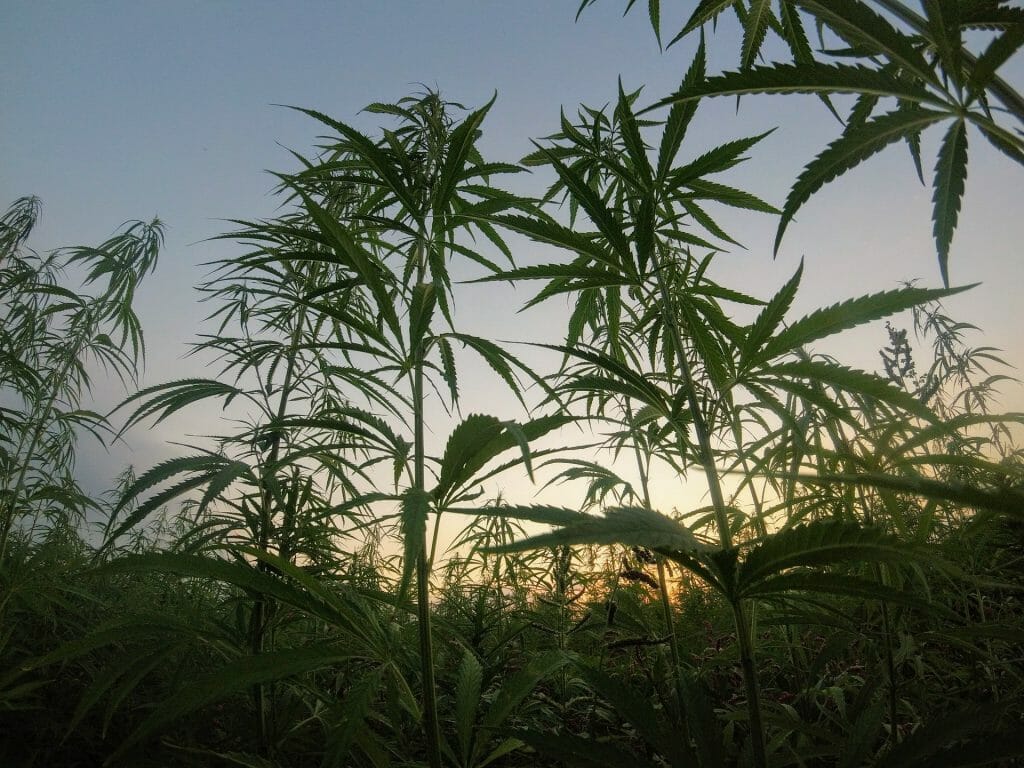Growing marijuana comes with a lot of satisfaction. There’s no better feeling than smoking your buds you cultivated. However, you can enjoy the thrills of wild marijuana— there’s a lot of weed growing in the wild.
The only reason you haven’t smoked ‘ditch weed’ is that you probably don’t know where to find it. Oh, you may not be interested in smoking ditch weed, given its quality is not as good as domesticated weed, but spotting marijuana growing in the wild must be a blissful sight.
If you’re interested in scavenging for wild weed, keep in mind the conditions that favor the wild growth. Of course, wild marijuana is highly resistant— more than domesticated weed, and can survive in the wild. But still, the climate must be favorable for the seeds to germinate, grow, and ripe into buds.
Climates where wild weed thrives
Most probably, you haven’t stumbled on ditch weed because your climate doesn’t favor its growth. Since nobody controls the wild environment for the plant, it has to take root where it can blossom without help— from humans. Though there might be a few exceptions, these are the climates where wild weed thrives;
Tropical climate- The tropical climate is known for the evergreen rainforests and savannas. The climate promises regular rainfall and blazing sunshine which is great for some marijuana strains to grow in the wild.
Dry climate- If you thought nothing blooms in the desert except shrubs and succulent cactus, you need to think again. Some marijuana strains like Afghanistan landrace and Egypt landrace can grow in dry regions.
However, weed growing in dry regions must also be resistant to extreme temperatures at night. Still, do not be surprised when you stumble on wild weed in the desert— the weed always grows somehow!
Temperate climate- Temperature is one of the few factors that most novice marijuana growers struggle with. You know high temperatures can limit your yield when growing, but feral weed can thrive in temperate areas. Not all strains can withstand warm temperatures, but strains like Swazi Gold and Lebanon landrace can thrive in such climate.
Continental climate- Continental climates are known for the hot summers and extremely cold winters. The conditions are extreme, and if you brought your indoor cannabis plant and dumped it here, it will most likely wilt and die.
However, some cannabis strains like Nepalese landrace and Switzerland landrace enjoy this climate.
Places known for wild weed

Wild weed grows where the conditions favor it— it can grow anywhere favorable. But there are places where feral weed sightings are more rampant. Of course, these places exhibit any of the climates above. Here are the places you can tour for wild weed scouting:
India
Though Indian laws prohibit marijuana use, a lot of wild weed grow there. You know, you can think of it as nature’s way of subverting state laws. The warm, sunny climate, coupled with the humidity in the mountains present an excellent environment for weed to take root and thrive.
The Himalayan villages are one of the places in India where weed grows by themselves. The plant does so well that some villages, having seen how tolerant weed is, produce it for use. Marijuana is essential in making different kinds of hashish. The most popular hashish made from ganja is called Charas, which is made from weed resin.
Nepal
Nepal has a long history with cannabis. In the past, cannabis was an essential part of Nepalese lives. They used it in Ayurveda medicine and in their religious practices.
The Nepalese have been in love with cannabis for centuries, so much that in 1700 the Nepalese Charas— made from marijuana was recognized to be the best in the world.
Weed was widely used in Nepalese’s cultural and religious practices because it’s readily available. Even today, the Nepalese Himalayas is still known as home for wild weed. Here’s a video of a travel blogger who stumbled on wild cannabis in Nepal. https://www.youtube.com/watch?v=d_9l5sBaBKI
Mexico
The whole of the North American climate is excellent for ditch weed, but Mexico is the most populated with wild weed. Spanish introduce weed into Mexico in the 16th Century in the form of Hemp.
Then, hemp was a valuable crop as it helped in the production of ropes and textiles. The Mexicans would soon begin psychoactive cannabis use, which was widespread by 1898. Today, several centuries later, cannabis still grows wildly in Mexico.
Jamaica
Jamaica is known for great people— from Marcus Garvey to Bob Marley to Usain Bolt, Jamaica has etched its name in the world’s canvas as the summer sunshine. If you know the relationship between cannabis and light, you’ll understand why Jamaica has vast fields of wild cannabis.
The climate is so good that if you throw a cannabis seed anywhere, it takes root.
Can you smoke wild cannabis?
Wild cannabis is safe for consumption. What could be different? It is just the same weed, just different conditions. However, lower your expectations, wild weed has low THC content, thus won’t get you as high as you would on commercial-grade buds.
But wild weed is useful in creating breeds that are more resistant to environmental conditions. The wild ruderalis in America can be crossed with weaker strains to enhance their survival in poor conditions. It can also be used to dilute the skunk aroma in strong-smelling strains.
In conclusion
Cannabis plants are resistant and can grow in the wild without the help of humans. The only difference, when you grow your cannabis, you intend to get the most potent buds, and that’s not what you get in wild cannabis. Their potency might be different, but they are generally lower in THC than the cannabis you cultivate.

